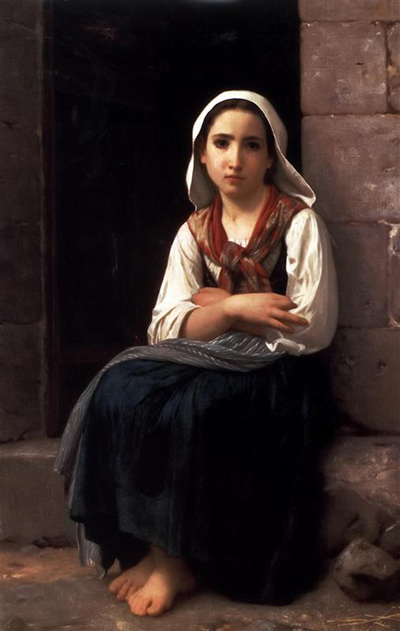The portrait of Yvonette was painted by William Adolphe Bouguereau in 1867. It was an oil on canvas painting in the neoclassical style.
The portrait shows a very pensive Yvonette which shows this painters talent in portrait painting. There is little in the background that is interesting so the whole attention is focused on the figure.
Her clothing shows us that this girl is not from the upper classes, and indeed the modest clothing and the bare feet would lead us to believe that this young lady is of the working classes, and probably from one of the European countries, maybe France as the artist was French.
I personally like this painting, my tastes in art are pretty classical, and a good portrait painting often appeals to me.
The paintings by Bouguereau where for quite a while considered too classical and his career did not seem to be going well for a period in the 20th century.
Modern and abstract art had become all the rage, but fortunately a revival in the appeal of the more classical subjects in art returned in recent years.
This maybe in part to the increasing interest and influence of women in the art world, whatever the reason it has led to an increased interest in some superb artists and their work.
Bouguereau did some wonderful paintings, some of his most famous being 'Virgin with Angels', 'Birth of Venus', and 'Song of the Angels'.
These are brilliant works of art but for pure skill and simplicity I don't think you have to go any further than his poignant and simple painting of Yvonette. This painting may be fairly simple in subject but the skill of the artist is absolutely apparent.
This painting to me symbolises the skill and brilliance of Bouguereau as an artist, and also shows a man that was not swayed by the fashion for modern art but painted, and also eventually taught other artists that would go on to produce not only classical paintings but more modern art work, while still acknowledging their tutors expertise.




